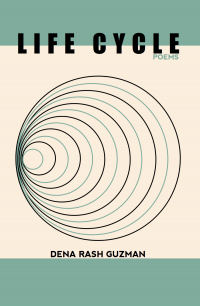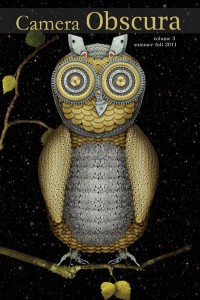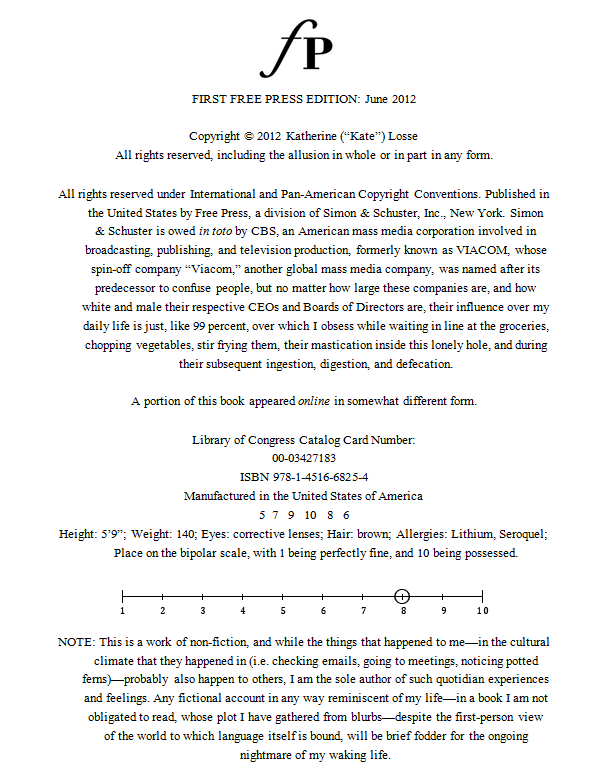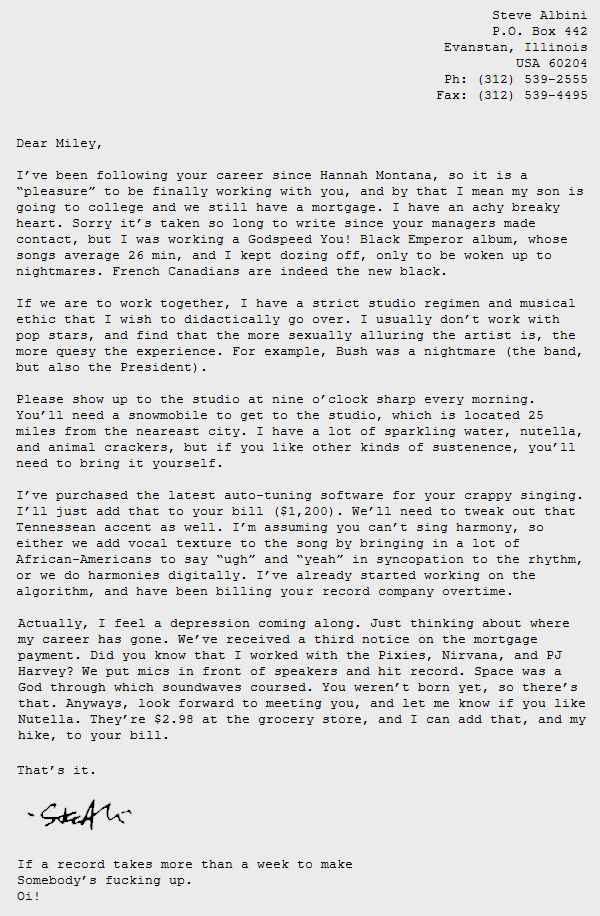Gang Rape Me Now Please: A Tiny Story By Baby Marie-Antoinette
 A little bit ago, like a couple of nighttimes past or so, Baby Marie-Antoinette, the second Bambi Muse baby despot, sent me Gang Rape Me Now Please, a tiny story she composed.
A little bit ago, like a couple of nighttimes past or so, Baby Marie-Antoinette, the second Bambi Muse baby despot, sent me Gang Rape Me Now Please, a tiny story she composed.
She sent it through mail, not the kind that everybody today uses, but the kind that Lorine Niedecker and Louis Zukofsky used.
Being a boy, gang rape isn’t really applicable to me. So I sent the tiny story to a girl, or, to be more precise, a ghostly girl, as the girl was Helen Burns, Jane Eyre’s BFF.
Helen said that the tiny story unveils the utter unpleasantness of autonomy, consent, individuality, basic human rights, and so on.
Helen went on to say that Baby Marie-Antoinette’s story was much more Godly than America will ever be, and it’d be wonderful to share it, as 2013 earth needs God.
Heeding Helen’s counsel, here is Baby Marie-Antoinette’s tiny story, Gang Rape Me Now Please:
Once upon a time there was a French princess named Baby Marie-Antoinette.
Baby Marie-Antoinette liked mice, cherry cream cheese croissants, Disney princesses, and Christianity.
Baby Marie-Antoinette also liked boys.
The boys in the Disney movies are heroic and dashing. They sail the seas (like Eric) and they save each other from impending doom (like Buzz Lightyear and Woody).
But the boys on 2013 earth were the opposite. They were nice, accommodating, and laid back. These average attributes caused Baby Marie-Antoinette to scream, “Ugh!”
One day Baby Marie-Antoinette was able to escape the clutches of her mommy, Empress Maria Theresa, and venture out into the Big Apple, searching for grandeur, extremeness, gang rape.
Baby Marie-Antoinette approached a bald boy with a big nose. She asked him if he’d gang rape her.
The boy declined, politely introduced himself (it turns out his name was Lloyd Blankfein), and asked Baby Marie-Antoinette if her mommy would be interested in purchasing some collateral debt obligations (CDOs).
Baby Marie-Antoinette shook her head. Then she approached another boy. The boy paired pink jeans with an ironic sweater. Baby Marie-Antoinette asked him if he’d gang rape her.
This boy declined as well, explaining that he was a feminist in the middle of shooting a Kickstarter-backed documentary about gender inequality.
Baby Marie-Antoinette sighed. Realizing that the chances of her meeting a big, bold, bullying boy were highly unlikely, she found her way back home, crawled under her Tinker Bell blanket, and cried.
The &Now Awards Volume 2: The Best Innovative Writing
 The &Now Awards Volume 2: The Best Innovative Writing
The &Now Awards Volume 2: The Best Innovative Writing
Edited by Davis Schneiderman
&NOW Books, 2012
400 pages / $19.95 Buy from Amazon or Northwestern University Press
The second volume of The &NOW Awards: The Best Innovative Writing is a twin set: one book, two parts, bound together in opposing orientations. There is one side, and then there is an other side. As editor Davis Schneiderman informs us in both introductions, “these ‘sides’ mirror each other, except when they do not.” Craig Dworkin’s “The Cube” on one side mirrors, on the other, a cube-shaped stamp story by Alissa Nutting. Kate Durbin’s appropriative “Anna Nicole Show” corresponds with Joe Atkins’ appropriative “Boxxy Foar 4DD1@!!!!1!!” Visual poetry shows up in the same slot on both sides, Nico Vassilakis’s STARINGS matching up with A.J. Patrick Lisziewicz’s Alphabet Man.
Then there are pieces that don’t (seem to) match at all, but whose correspondence contrives a relationship anyway. The split design comes across as both arbitrary and quite savvy, a description that could easily be applied to the anthology itself—probably to anthologies generally. How does one archive “innovative,” or any category of, writing? Through a book that might as well be two books. Through inverse relationships. Through matches and clashes. There are two sides to innovative writing, the anthology suggests: more than two, obvs, but alas, we must surrender to the limitations of the book.
The &NOW Awards doesn’t purport to claim anything about the “best” innovative writing except that the field is diverse: this is its best feature. It inhabits the “best of” anthology coyly and subversively, and it casts the net far and wide—vastly more so than, say, Houghton Mifflin’s staid Best American Series. The &NOW series is uninterested in genre boundaries, and offers a richly diverse, if necessarily selective, archive of (mostly) US-based contemporary literary writing. Whereas the first &NOW Awards, published in 2009, collected mainly writers who are or have been associated with &NOW as an organization and biennial festival, Volume 2 spreads out more both aesthetically and demographically. This edition includes more writers unassociated with the festival, more poetry, and more variety overall, including several pieces designed to be read on a screen, and, especially welcome, a number of works recently translated into English: for instance, excerpts from three novels written by radical French writer Antoine Volodine (a pseudonym) and two of his heteronyms, translated from the French by Brian Evenson and Antoine Cazé; and an excerpt from Song for his Disappeared Love by Chilean poet Raúl Zurita, originally published in 1985 and translated from the Spanish by Daniel Borzutzky.
The anthology’s dominant mode is arguably appropriation-based writing. Gretchen Henderson opens one side with a metappropriative work: an essay in fragments, On Marvellous Things Heard draws from a selective inventory of literary appropriations of music. On the other side, David Shields opens with an excerpt from Reality Hunger. According to the prefatory statement, &NOW was permitted by Knopf to republish only those parts of the book written by Shields; given that the whole text is a collage of other texts, they republished the Shield’s introduction to the appendix, and the appendix itself, which lists all of the book’s sources. “Who owns the words?” Shields asks. “We do—all of us.” Except we don’t, as Knopf’s restrictions remind us.
These opening pieces foreground concerns central to the anthology overall: issues of authorship, ownership, (un)original writing. The volume is an intertextual feast, or an anti-authority riot, with authors lifting from a broad range of texts, many of them canonical. In her excerpt from The Whiteness of the Foam, Evelyn Reilly amalgamates Moby Dick with a nano-fuel price list and diagrams of synthetic materials to structure a study of literary and environmental immortality. K. Silem Mohammad combines canonical appropriation with web-generated and constraint-based writing in his Sonnagrams, which rework Shakespeare’s sonnets after feeding them line by line into an internet anagram engine. Noncanonical sources show up as well: Kate Durbin chillingly transforms the notorious clown video used in court as evidence against Anna Nicole Smith’s boyfriend and attorney Howard K. Smith; Ken Taylor writes a cento composed of Charlie Sheen quotes (“there are parts of me/ that are dennis hopper”).
October 9th, 2013 / 11:05 am
Interview with M.E. Parker of the Camera Obscura Journal of Literature & Photography
I’ve always been curious about the darkroom where literary magazines come together. This is a series of interviews engaging, talking, and sometimes annoying editors about their magazines. How did they come about, what do they hate about editing, and what do they love most about it? This is the second in the series and I talked with M.E. Parker of the Camera Obscura Journal of Literature & Photography. It’s by far one of the most beautiful literary magazines around with riveting photography that goes hand-in-hand with some amazing voices. Seriously, the covers kick ass and the stories rip you open from inside and your guts are hanging out and you smile, “Cheese,” for the camera because you want to capture that brief moment where inspiration bisects into awe and mesmerized nausea from having been split open. A brief description on their site states they are: “an independent literary journal and internet haunt featuring contemporary literary fiction & photography. Contributors include established, as well as, emerging writers and photographers.”
As a brief bio and introduction to M.E. Parker:
M.E. Parker is a writer, an editor, web designer, and a carpenter who imagines a world of wooden computers with leather bound keyboards. His short fiction has come up for air in numerous print publications and Internet haunts. He is the founding Editor of Camera Obscura Journal of Literature & Photography. www.meparker.com
***
PTL: When and how did you first come up with the idea of starting the Camera Obscura Journal of Literature and Photography?
M.E. Parker: As is often the case with grand notions conceived in the mental stupor of Belgian Monk brewed beer, I first envisioned a glorious, indescribable tome, pared the following day by the limits of funds, time, and logistics with a few basic principles to guide it. Mostly I wanted a writer and artist friendly venue where, not only contributors, but submitters as well, really do come first, and the stress of the submission process gives way to levity. And in the process my hope was that we create a great community and journal and have fun on the journey (we are still the only journal with a big red “Bug the Editor” button on the withdraw/submit page).
As the editor, I assembled a team not unlike selecting a crew for a heist:
Me – Captain and story wrangler.
Shane Oshetski – can deconstruct, analyze and ostracize any short story.
Tim Horvath – erudite lover of language and Borges, who might wear tweed as an old man.
Meredith Doench – appreciates variety, enjoys the flaws, offsets Shane.
Kate – my wife and incredible photographer, master negotiator, foiler of plots.
PTL: The photography in the magazine is just incredible. What goes into the selection/curating process for the photographs? Are most/all of them chosen from the Competition?

M.E. Parker: The photography does come from the competition for a variety of reasons. Rather than selecting artwork to showcase on the basis of appeal or to augment the writing as an accessory, I wanted a journal where the photography underwent the same editorial scrutiny and selection criteria as the writing without regard for prevailing aesthetic.
25 Points: Life Cycle
 Life Cycle
Life Cycle
by Dena Rash Guzman
Dog On A Chain Press, 2013
69 pages / $10.00 buy from Powell’s
1. Dena Rash Guzman climbs trees and sports cowboy boots and straw hats.
2. Many men drown at sea.
3. All the poems are titled Life Cycle to avoid/create/engender confusion.
4. Handless children populate the poppy pods.
5. DRG has been to China and beyond in search of the muse.
6. Farm weddings do not feature high on her list of favorite events.
7. Bones sleep, are tossed, and itch in these poems.
8. I spent one hot summer in Portland once, some years ago, and did not bump into the poet.
9. I have written several poems lately dealing with loss and aging, and “This is how we forget our ancestors:” shakes the dust off my own family skeletons.
10. DRG reads her poetry live more than most writers I’ve come across, and I’m not sure this is due to her brilliant reading, or Portland, OR, having more readings per square mile than Brooklyn, NY. READ MORE >
October 8th, 2013 / 2:47 pm
John Cheever fiction published in The New Yorker
“Buffalo” – June 22, 1935 (pp. 66-68)
“Play A March” – June 20, 1936 (pp. 20-21)
“A Picture for the Home” – Nov. 28, 1936 (pp. 80-83)
“In the Beginning” – Nov. 6, 1937 (pp. 77-80)
“Treat” – Jan. 21, 1939 (pp. 50-51)
“The Happiest Days” – Nov. 4, 1939 (pp. 15-16)
“It’s Hot in Egypt” – Jan. 6, 1940 (pp. 20-21)
“North of Portland” – Feb. 24, 1940 (pp. 20-21)
“Survivor” – Mar. 9, 1940 (pp. 54-56)
“Washington Boarding House” – Mar. 23, 1940 (pp. 23-24)
“Riding Stable” – Apr. 27, 1940 (pp. 20-21)
“Happy Birthday, Enid” – July 13, 1940 (pp. 15-16)
“Tomorrow Is a Beautiful Day” – Aug. 3, 1940 (pp. 15-16)
“Summer Theatre” – Aug. 24, 1940 (pp. 45-48)
“The New World” – Nov. 9, 1940 (pp. 17-19)
“Forever Hold Your Peace” – Nov. 23, 1940 (pp. 16-18)
“When Grandmother Goes” – Dec. 14, 1940 (pp. 68-75)
“Hello, Dear” – Feb. 15, 1941 (pp. 20-21)
“The Law of the Jungle” – Mar. 22, 1941 (pp. 16-18)
“There They Go” – July 19, 1941 (pp. 17-18)
“Run, Sheep, Run” – Aug. 2, 1941 (pp. 50-52)
“Publick House” – Aug. 16, 1941 (pp. 45-49)
“These Tragic Years” – Sept. 27, 1941 (pp. 15-17)
“In the Eyes of God” – Oct. 11, 1941 (pp. 20-22)
“The Pleasures of Solitude” – Jan. 24, 1942 (pp. 19-21)
“A Place of Great Historical Interest” – Feb. 21, 1942 (pp. 17-19)
“The Shape of a Night” – Apr. 18, 1942 (pp. 14-16)
“Goodbye, Broadway—Hello, Hello” – June 6, 1942 (pp. 19-20)
“Problem No. 4” – Oct. 17, 1942 (pp. 23-24)
“The Man Who Was Very Homesick for New York” – Nov. 21, 1942 (pp. 19-22)
“Sergeant Limeburner” – Mar. 13, 1943 (pp. 19-25)
“They Shall Inherit the Earth” – Apr. 10, 1943 (pp. 17-18)
“A Tale of Old Pennsylvania” – May 29, 1943 (pp. 20-23)
“The Invisible Ship” – Aug. 7, 1943 (pp. 17-21)
“My Friends and Neighbors All, Farewell” – Oct. 2, 1943 (pp. 23-26)
“Dear Lord, We Thank Thee for Thy Bounty” – Nov. 27, 1943 (pp. 30-31)
“Somebody Has to Die” – June 24, 1944 (pp. 27-28)
“The Single Purpose of Leon Burrows” – Oct. 7, 1944 (pp. 18-22)
“The Mouth of the Turtle” – Nov. 11, 1944 (pp. 27-28)
“Town House” – Apr. 21, 1945 (pp. 23-26)
“Manila” – July 28, 1945 (pp. 20-23)
“Town House—II” – Aug. 11, 1945 (pp. 20-25)
“Town House—III” – Nov. 10, 1945 (pp. 27-32)
“Town House—IV” – Jan. 5, 1946 (pp. 23-28)
“Town House—V” – Mar. 16, 1946 (pp. 26-30)
“Town House—VI” – May 4, 1946 (pp. 22-27)
“The Sutton Place Story” – June 29, 1946 (pp. 19-26)
“Love in the Islands” – Dec. 7, 1946 (pp. 42-44)
“The Beautiful Mountains” – Feb. 8, 1947 (pp. 26-30)
“The Enormous Radio” – May 17, 1947 (pp. 28-33)
“The Common Day” – Aug. 2, 1947 (pp. 19-24)
“Roseheath” – Aug. 16, 1947 (pp. 29-31)
“Torch Song” – Oct. 4, 1947 (pp. 31-39)
“O City of Broken Dreams” – Jan. 24, 1948 (pp. 22-31)
“Keep the Ball Rolling” – May 29, 1948 (pp. 21-26)
“The Summer Farmer” – Aug. 7, 1948 (pp. 18-22)
“The Hartleys” – Jan. 22, 1949 (pp. 26-29)
“The Temptations of Emma Boynton” – Nov. 26, 1949 (pp. 29-31)
“Christmas Is a Sad Season for the Poor” – Dec. 24, 1949 (pp. 19-22)
“The Season of Divorce” – Mar. 4, 1950 (pp. 22-27)
“The Pot of Gold” – Oct. 14, 1950 (pp. 30-38)
“The People You Meet” – Dec. 2, 1950 (pp. 44-49)
“Clancy in the Tower of Babel” – Mar. 24, 1951 (pp. 24-28)
“Goodbye, My Brother” – Aug. 25, 1951 (pp. 22-31)
“The Superintendent” – Mar. 29, 1952 (pp. 28-34)
“The Chaste Clarissa” – June 14, 1952 (pp. 29-33)
“The Cure” – July 5, 1952 (pp. 18-22)
“The Children” – Sept. 6, 1952 (pp. 34-45)
“O Youth and Beauty!” – Aug. 22, 1953 (pp. 20-25)
“The National Pastime” – Sept. 26, 1953 (pp. 29-35)
“The Sorrows of Gin” – Dec. 12, 1953 (pp. 42-48)
“The Five-Forty-Eight” – April 10, 1954 (pp. 28-34)
“Independence Day at St. Botolph’s” – July 3, 1954 (pp. 18-23)
“The Day the Pig Fell into the Well” – Oct. 23, 1954 (pp. 32-40)
“The Country Husband” – Nov. 20, 1954 (pp. 38-48)
“Just Tell Me Who It Was” – Apr. 16, 1955 (pp. 38-46)
“Just One More Time” – Oct. 8, 1955 (pp. 40-42)
“The Bus to St. James’s” – Jan. 14, 1956 (pp. 24-31)
“The Journal of an Old Gent” – Feb. 18, 1956 (pp. 32-59)
“The Housebreaker of Shady Hill” – Apr. 14, 1956 (pp. 42-71)
“Miss Wapshot” – Sept. 22, 1956 (pp. 40-43)
“Clear Haven” – Dec. 1, 1956 (pp. 50-111)
“The Trouble of Marcy Flint” – Nov. 9, 1957 (pp. 40-46)
“The Bella Lingua” – Mar. 1, 1958 (pp. 34-55)
“Paola” – July 26, 1958 (pp. 22-29)
“The Wrysons” – Sept. 13, 1958 (pp. 38-41)
“The Duchess” – Dec. 13, 1958 (pp. 42-48)
“The Scarlet Moving Van” – Mar. 21, 1959 (pp. 44-50)
“The Events of That Easter” – May 16, 1959 (pp. 40-48)
“The Golden Age” – Sept. 26, 1959 (pp. 46-50)
“The Lowboy” – Oct. 10, 1959 (pp. 38-42)
“The Music Teacher” – Nov. 21, 1959 (pp. 50-56)
“A Woman Without a Country” – Dec. 12, 1959 (pp. 48-50)
“Clementina” – May 7, 1960 (pp. 40-48)
“Some People, Places, and Things That Will Not Appear in My Novel” – Nov. 12, 1960 (pp. 54-58)
“The Chimera” – July 1, 1961 (pp. 30-36)
“Seaside Houses” – July 29, 1961 (pp. 19-23)
“The Angel of the Bridge” – Oct. 21, 1961 (pp. 49-52)
“The Brigadier and the Golf Widow” – Nov. 11, 1961 (pp. 53-60)
“The Traveller” – Dec. 9, 1961 (pp. 50-58)
“Christmas Eve in St. Botolph’s” – Dec. 23, 1961 (pp. 26-31)
“A Vision of the World” – Sept. 29, 1962 (pp. 42-46)
“Reunion” – Oct. 27, 1962 (p. 45)
“The Embarkment for Cythera” – Nov. 3, 1962 (pp. 59-106)
“Metamorphoses” – Mar. 2, 1963 (pp. 32-39)
“The International Wilderness” – Apr. 6, 1963 (pp. 43-47)
“Mene, Mene, Tekel, Upharsin” – Apr. 27, 1963 (pp. 38-41)
“An Educated American Woman” – Nov. 2, 1963 (pp. 46-54)
“The Habit” – Mar. 7, 1964 (pp. 45-47)
“Montraldo” – June 6, 1964 (pp. 37-39)
“Marito in Città” – July 4, 1964 (pp. 26-31)
“The Swimmer” – July 18, 1964 (pp. 28-34)
“The Ocean” – Aug. 1, 1964 (pp. 30-40)
“Another Story” – Feb. 25, 1967 (pp. 42-48)
“Bullet Park” – Nov. 25, 1967 (pp. 56-59)
“Percy” – Sept. 21, 1968 (pp. 45-50)
“The Folding-Chair Set” – Oct. 13, 1975 (pp. 36-38)
“The Night Mummy Got the Wrong Mink Coat” – Apr. 21, 1980 (p. 35)
“The Island” – Apr. 27, 1981 (p. 41)
“I am not opposed to poems. I love poems. I love people who write poems, passionately. But the SOCIAL ROLE OF POET is a disaster, just like every other social role. The struggle is for the end of roles, for the end of the division of labor, for the end of the gender distinction, for the end of identity as it exists. Free relations, not roles. Poems made by anyone who makes them. No poets.” — Joshua Clover has one point and it’s about rabbits
The Kind of Girl by Kim Henderson
 The Kind of Girl
The Kind of Girl
by Kim Henderson
Rose Metal Press, August 2013
56 pages / $12 Buy from Rose Metal Press
Things I like about The Kind of Girl #1:
The cover: stylized dandelion in purple and black with a few slight tendrils blowing away. Which, cute as it is, is actually drawn from the book too, a metaphor for the narrator’s movement from “the summer of ugliness” (in the first sentence of the book, lauded in the introduction by Deb Olin Unferth) to the luck and leisure and happiness that came beyond:
I grew up and made my own way in the world—a dandelion among rosy girls who’d come of age in regular houses. Yellow was in that year, and I snagged the best boy.
The dandelion, pressed from a photopolymer plate onto Neenah Classic Linen 80# cover stock in Silverstone at the Museum of Printing in North Andover, Massachusetts. (So the copyright page tells me.) Then a slice of “Jellybean Green” endpaper. Then the book.
Things I like about The Kind of Girl #2:
The lovely thing about Kim Henderson’s chapbook is that it is eminently readable. You get her. It has content value a little like David Foster Wallace’s “Forever Overhead,” parts of Patrick Somerville’s Trouble, any number of coming-of-age type stories that get at the adolescent experience. But with two bonuses: it is more restrained, in both length and tone, and it comes from a female perspective.
My “other book” right now is Lily Hoang’s Changing, which has similar coming-of-age subject matter, but which also (Lily knows, and so do we all) takes a whole lot of effort to read. The Kind of Girl is a pleasant swing to the other side of the spectrum: still small press, still beautiful production value, but amenable, the kind of book that seems like it was made to hold the reader gently. One of the stories (“Muscle Memory”) first came out in Tin House, for goodness’ sake. Rose Metal Press put out a collection here with a similar appeal: spectacularly written, thematically complex, and/but formally comprehensible.
Things I like about The Kind of Girl #3:
Which, though, is not to say that The Kind of Girl is “conventional” or “traditional” in a negative sense. Part of what makes it friendly to the reader is that its stories are so short (by definition: the Rose Metal’s Short Short Chapbook Contest, which The Kind of Girl won, called for stories under 1,000 words). It’s not as if the short-short form is revolutionary by now, but it remains a way of representing the world that has been limited to a comparably small readership; if “no one reads short stories,” much of the crowd who does read short stories still looks at short-shorts askance.
That Kim Henderson chose to make these stories so brief is valuable and renovating, considering their classic subject matter and the relatively plain language in which they are composed. They give new light to the classic crises of body image, disillusionment with idolized teachers, and—this one feels more fresh to me—the slow transference of annoyed love from father to spouse. When even the most archetypal of these are compressed in Henderson’s shorts, they begin to feel more like suggestions, like the jagged fragments that compose our memory and do not “satisfy” the way a longer short story might implicitly claim to.
Part of Kim Henderson’s art is accentuating this feeling, providing a complete story while leaving the reader tense and expectant. Many of the stories’ last lines make me feel hamstrung: they end like We Are the Champions, between breaths, on a note that anticipates ending but does not provide it.
The last line in “The Carousel,” where the cycle of love and annoyance between lovers is established:
He curls against you, and you pet his hair and grind your teeth.
After her story of being called a “bad girl” all the time she grew up (“Bad Girl”):
But I wish I could go back and give little Marie some new adjectives.
Following news accounts of a naked woman getting thrown off a bridge (“The Bridge”):
My father switched the TV off and left for a four-wheeler ride.
I went to my room and colored.
This all leaves you feeling unsatisfied, but unsatisfied in a good way, as if the imperfections and loose ends do not in fact need to be reconciled. As if they can be told, and let be. And though it does not feel quite right, that wrongness is the refuse of life.
READ MORE >
October 7th, 2013 / 11:00 am
Paul Harding’s Enon
 Enon
Enon
by Paul Harding
Random House, September 2013
256 pages / $26 Buy from Powell’s or Amazon
I am 17 when I first read Tinkers. I have only a few weeks left before I graduate high school, before I move off to college, before I become whatever I am going to be. And then I read Tinkers—quite by accident—and I decide that I will major in English. I read Tinkers all the way through in the Starbucks in the Barnes & Noble where I pick it up. It is glorious.All this to say: if there is an ideal reader for Enon, Paul Harding’s new novel, it is me. So let me tell it to you straight, as one who is predisposed to love this book, to love anything Harding touches: Enon is a good book. It is also wholly unremarkable.
It is the curse of a lauded artist that one great work might overshadow other good—but somehow lesser—works. Such is Harding’s fate.
Enon is the psychological investigation of a man, Charlie Crosby, who loses his daughter to a car crash and his wife to a divorce within the span of a few weeks. In its best moments, Enon lifts the reader out of herself and places her into a grand cosmos of lyrical, emotional language—a cosmos that emerges out of nothing, like a grand planetarium when the lights are off and the stars seem as if they are just within the reach of our miniscule human fingers. These moments are transcendent; but they are also, unfortunately, merely moments. When they end, the lights of the planetarium come up and we see once more the wires connected to the planets, the projectors creating the images of stars. The veil is lifted and the magic is lost.
Which is not to say that these other moments—the majority of the book—are bad. They are, rather, merely flaccid. Harding has a great handle on the oscillation between this elegant lyricism and what Mary Oliver has called “cold language,” the humdrum language of the banal. But it seems to me that too often his humdrum language is a bit too hum. In the hands of another Pulitzer-winning novelist—Michael Chabon, say, or Richard Russo—this oscillation between the lyric and expository modes would be less noticeable, both because Chabon and Russo have a better grasp on the banal, and because their lyric abilities don’t come close to Harding’s. But Chabon—and, to a lesser degree, Russo—have something that Harding does not: an impulse towards plot.
That Enon is a plotless novel is no offense; that it is a motionless one, however, is. There is the vague silhouette of an emotional journey, but it exists only as suggestion. It merely imitates the sounds and shapes of a journey without the heft and emotional bulk of one. Take this paragraph, for instance, which is simultaneously a perfect outline of the entire “plot” of the novel (“spoiler alert” doesn’t even begin to be a salient concept in the realm of this novel); an example of Harding’s enchanting, lyrical, winding sentences; and a perfect encapsulation of the type of shading-without-substance narrative Enon trades in:
October 7th, 2013 / 11:00 am




